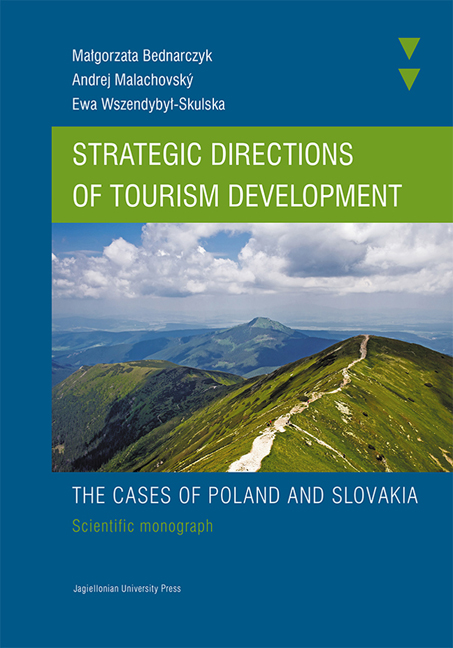Book contents
- Frontmatter
- Contents
- Introduction
- PART I European directions of strategic development of tourism
- PART II Strategic directions for tourism development: a case of Slovakia
- PART III Innovation as a key success factor of the tourism development strategy in Poland
- Conclusions
- References
- List of Figures
- List of Tables
- Appendix
Conclusions
Published online by Cambridge University Press: 10 January 2018
- Frontmatter
- Contents
- Introduction
- PART I European directions of strategic development of tourism
- PART II Strategic directions for tourism development: a case of Slovakia
- PART III Innovation as a key success factor of the tourism development strategy in Poland
- Conclusions
- References
- List of Figures
- List of Tables
- Appendix
Summary
Directions of the strategic tourism development by the European Commission can be realized only by the co-participation and co-responsibility of the countries and regions. Europe, to continue being the most often visited destination, needs to co-create a common long-term policy in terms of tourism development, which means that each European Union country, and each region as well, needs to create their own national strategy based on the systematic monitoring of competitiveness of the national and regional tourism sector in order to take full advantage of its unique potential.
The examples of two European countries presented in this book, i.e. Poland and Slovakia, it is not so simple. Social, economic, political and environmental conditions significantly affect the efficiency of the activities that are directed towards the growth of competitiveness of the tourism sector.
Successive development of strategic management that reflects the changed conditions is a guarantee of practical application of knowledge. It does not refer to one general model only, but also to a number of ideas that not only agree with each other, but also negate one another. The basic contents line can be characterized as a strategic analysis, mission and goals formulation, and major and functional strategies. It can also be applied in the tourism sector. It is evidenced in the important works of theoreticians of tourism. In their works, knowledge of strategic management is reflected in formulation of tourism policy at both the national and regional level.
Basing on the analysis, several relevant results were obtained. The range and degree of the analysis, as well as mutual comparability of the data, are partly determined by the state of tourism statistics. It is never possible to carry out a comprehensive analysis. An analysis must be carried out in a relatively short period of time so that one could take the next step. It confirms the thesis, which says that, for strategic management, it is typical to make decisions in uncertainty which results from the lack of information. The fact that practice underestimates a number of weaknesses and threats is shown in the analysis.
- Type
- Chapter
- Information
- Strategic Directions of Tourism DevelopmentThe Cases of Poland and Slovakia - Scientific Monograph, pp. 145 - 146Publisher: Jagiellonian University PressPrint publication year: 2012

